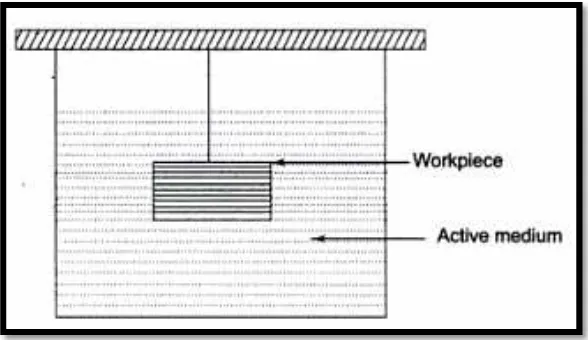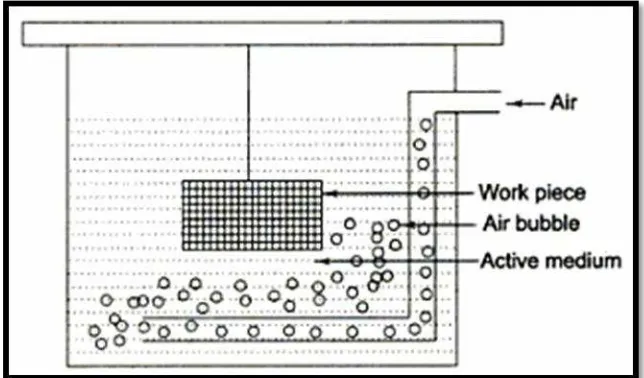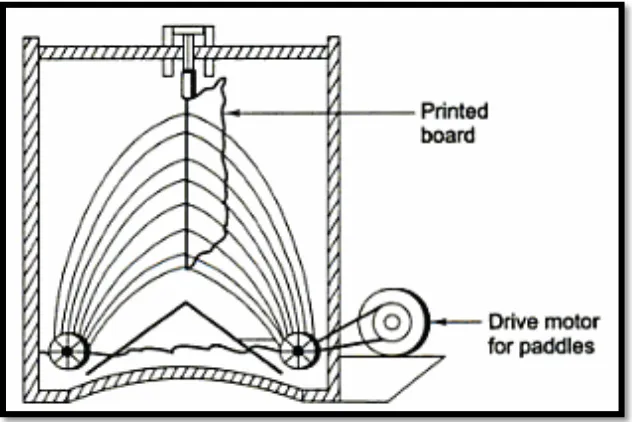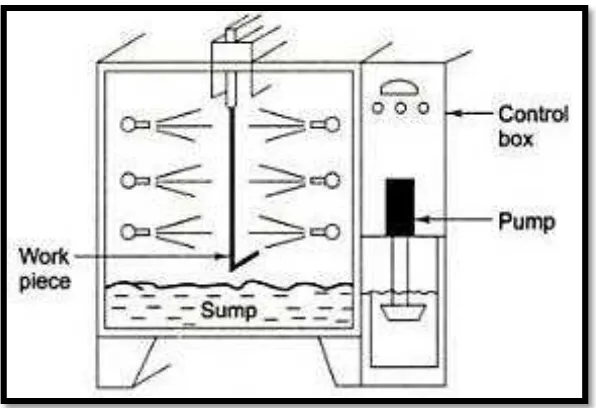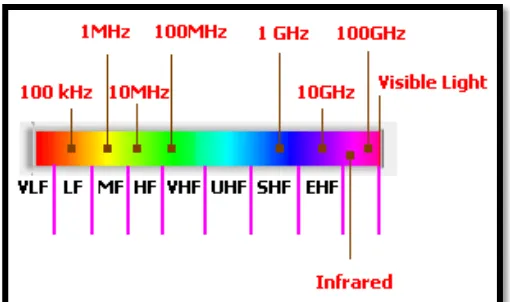PORTABLE ETCHING MACHINE
MUHAMMAD AZLAN SHAH BIN IBRAHIM
B071110052
UNIVERSITI TEKNIKAL MALAYSIA MELAKA
UNIVERSITI TEKNIKAL MALAYSIA MELAKA
PORTABLE ETCHING MACHINE
This report submitted in accordance with requirement of the Universiti Teknikal Malaysia Melaka (UTeM) for the Bachelor Degree of Engineering Technology
(Electronics Telecommunications) (Hons.)
by
MUHAMMAD AZLAN SHAH BIN IBRAHIM
B071110052
900604-01-6227
DECLARATION
I hereby, declared this report entitled “Portable Etching Machine” is the results of my own research except as cited in references.
Signature : ……….
Author’s Name : MUHAMMAD AZLAN SHAH BIN IBRAHIM
APPROVAL
This report is submitted to the Faculty of Engineering Technology of UTeM as a partial fulfillment of the requirements for the degree of Bachelor of Engineering Technology (Electronics Telecommunications) (Hons.). The member of the supervisory is as follow:
………
i
ABSTRACT
ii
ABSTRACT
iii
DEDICATION
iv
ACKNOWLEDGEMENT
First of all, Alhamdulillah and praise to Allah for giving me strength to endure in completing my final year project. I would like to express my deepest gratitude to my supervisor, Puan Eliyana Binti Ruslan, for her excellent guidance, caring, patience, and providing me with an excellent atmosphere for doing this project till end.
Not forgotten, special appreciation to both of my parents Ibrahim Bin Md Don and Norritah Bte Talib that constant supports, encouraging me and always there to support and stood by me through all the times. Furthermore, my very sincere thanks to all my friends that creates good memories throughout our friendship during our studies especially Zulhilmi that help me a lot, Al hafiz that continuously giving a new idea and troubleshooting, Faiz who he help me in designing, Haseef who contribute to comment in order to complete my project and also to Taukhid, Amri, Shazwan and Zubair that always keep me stay strong.
vi
3.3 Software And Hardware Requirement 17
3.3.1 Software 17
CHAPTER 4: RESULT AND DISCUSSIONS 20
vii
4.7 Specification 28
4.7.1 Size 28
4.7.2 Material 28
4.7.3 Performance 28
4.7.4 Safety 28
4.8 Result 29
4.8.1 Comparison of etched PCB Board 29
4.9 Discussions 30
CHAPTER 5: CONCLUSION AND FUTURE WORK 31
5.1 Conclusion 31
5.2 Future Work 31
REFERENCES 32
viii
LIST OF TABLES
ix
4.6 Receiver Circuit Layouts 25
4.7 Transmitter Circuit Layouts 25
4.8 Operation of hardware 26
4.9 Final product of etching machine 27
4.10 Motor rotate with load 28
4.11 Complete etched PCB Board 30
1
1.1 Background
Technologies evolved by time, mostly in electronics industries. This portable etching machine were design to give advantages for users so that users can saved energy without doing the etching process manually, shortening the time to complete the etching process, saving cost without using the expensive etching machine and it’s user friendly. Even though nowadays we already have an etching machine, it usually placed in an industries or company that run or construct electronics circuit and that will makes us hard to use all the time we want. Moreover, people will mostly do this etching process manually by shaking the printed circuit board (PCB) with the solution and it will take time.
Furthermore the operation of this etching machine are using radio frequency (RF) to switch on. Next, the heat coil will boil the water until its reach the boiling point so that the etching process will produce good result of the PCB. Then, the next process will triggered on with a timer which is the etching process started.
Other than that, this machine will operates by using motor that can spin the PCB for etching process. It will supply by 12V input and the speed of motor can be control and can spin by forward and reverse. Then, the motor will stop automatically because of it is sets with a timer so that within the time setting the operation will end. In the duration of the time limit if the unwanted copper of the PCB still there, the process will be repeated.
2
1.2 Project Statement
Nowadays peoples are using electronics as parts of their life. By inventing electronic devices, we will have to design an electronic circuits and it will be produce in a big quantities. Exception for an electronics company which run by using big machine and get a consistent quantities to produce electronics circuit, many people out there who need an easier way to etching the circuit that they had design. Either they have to do manually by shaking the PCB board in a container that solve with etching liquid or they have to use the etching machine which is cost a lot.
1.3 Objective
The purpose of designing this project based on the observation which is:
To make the user easy to do the etching process without using their own energy.
Consider saving the time to complete the etching process for the PCB board.
This product is more affordable compare to the etching machine that we use nowadays which is bigger and expensive.
User friendly.
1.4 Work scope
3
2.1 History
A printed circuit board or PCB is a board that contain an electronic circuit that connecting electronic components found in devices. The circuits are formed by a thin layer printed on the surface of an insulating board.
There are three major types of printed circuit board construction which is single-sided, double-sided, and multi-layered. Single-sided boards have the components on one side of the PCB. When the number of components becomes too much for a single-sided board, a double-sided board may be used. Electrical connections between the circuits on each side are made by drilling holes through the PCB in appropriate locations and plating the inside of the holes with a conducting material. Other than that a multi-layered board, has a copper made up of layers of printed circuits separated by layers of insulation.
Printed circuit boards evolved from electrical connection systems that were developed in the 1850s. Metal strips or rods were originally used to connect large electric components mounted on wooden bases. In time the metal strips were replaced by wires connected to screw terminals, and wooden bases were replaced by metal chassis. But smaller and more compact designs were needed due to the increased operating needs of the products that used circuit boards.
4
2.2 Etching solutions and chemicals
Several chemicals are used for etching. The most common etchants are:
Ferric chloride with gold plate boards. As the ferric chloride etchant attacks tin, this is not suitable for tin or tin-lead plated boards. The rate of dissolution of copper depends on the ferric chloride concentration, temperature and agitation rate. Other than that, ferric chloride is the oldest and perhaps the most common etchant. It normally comes in crystal form. The crystals are dissolved in de-ionized water to achieve the concentration in the solution. This is typically 500 gm of ferric chloride in one litre of water.
2.2.2 Sulphuric Acid
5
2.2.3 Chromic Acid
Chromic acid mixed with sulphuric acid is used because of its strong oxidizing power and suitability for all kinds of metal resists. The etching rate is inconsistent but it has the advantage of little under cutting. However it’s used is now limited since it is difficult to regenerate and it is highly toxic, polluting and hazardous to health. It is generally not recommended for use.
2.2.4 Cupric Chloride
Cupric chloride offers an economical solution in the etching on a larger scale. From the pollution point of view, it offers the advantage of easy regenerate ability with the possibility of a relatively easy disposal, high throughput and better material recovery the dissolved copper capacity which is up to 150 g/l is high.
2.2.5 Alkaline Ammonia
Alkaline ammonia etching system is used in both etching system and is compatible with metallic and organic resists. The advantages of this etching are its minimum undercut, high copper dissolving capacity and fast etch rates. Alkaline etchants provide continuous etching rates of 30-60 um cu/min at a dissolved copper content of 150 g/l in the etchant.
2.3 Equipment and techniques
The etchant may be applied to boards in one of the following ways:
Immersion etching
Bubble etching
Splash etching
6
2.3.1 Immersion Etching
Immersion etching is the semi-plast technique which requires only a tank containing etching solution into which the board are immersed. The board are kept immersed until the etching is complete. This requires a long process time and the etch rate is thereby low. The solution can be heated to speed up the etching process. This method is suitable for small board. Normally ammonium persulphate with sulphuric acid etching medium is used for immersion etching.
Figure 2.1: Immersion Etching
2.3.2 Bubble Etching
This technique is a modified form of immersion etching with difference that air is bubbled through the etching solution. Air, passing through the solution, has two functions:
To ensure fresh etchant contact at the surface and to rinse away dissolved metal.
To enhance the oxidation power and to regenerate the etchant.
7
ammonium sulphate etchants are used in this technique. The primary disadvantage of bubble etching, when used with hydrogen peroxide sulphuric acid etchant, is that it generates a significant quantity of corrosive aerosol. Effective fume collecting with active scrubbing must be implemented if a bubbler is used.
Figure 2.2: Bubble Etching
2.3.3 Splash Etching
8
Figure 2.3: Splash Etching
2.3.4 Spray Etching
In this simplest form, a spray etching machine consists of a box type chamber having a sump below. The etching solution is pump under pressure from the sump through a pipe network to the nozzles and splashed onto the board surface. This allows the fresh solution to be sprayed giving a high etching rate. The factors which determine the evenness of etch are:
Uniformity of spray pattern, force, drainage and pattern configuration.
Etchant chemistry, the pump pressure, and nozzle configuration and placement, which determine the rate of etching.
The spray, which is done on both sides of the PCB on case of double sided board.
9
fabricated equipment should be made of acid and alkali resist material like PVC. There are two types of spray etching technique which are:
Horizontal spraying, where in this technique, etching is done from independently controlled spray nozzle banks at the top and bottom. Double sided horizontal etches are generally preferred in PC manufacturing as a majority of the PCBs are double sided.
Vertical spraying, which is the etching is carried out by placing panels in a rack, which is lowered into the spray box area. A combination of nozzle movement and nozzle oscillation up and down or sideways, with a large number of nozzles, provides optimum results.
10
Figure 2.5: Vertical Spraying Etching
2.4 Radio Frequency (RF)
RF (Radio Frequency) signals are electromagnetic signals that can propagate through space or solid state medium like- copper wires. For wireless communication, RF portion is connected to an antenna, so that it can be propagated out into the space. For wired communication, RF signal simply propagates through metal wires in a circuit board without the need of an antenna.
In literature, there are various frequency ranges for RF signals. Generally, frequency up to 3 GHz is considered as RF signal. Frequency range of 3-30 GHz is considered as microwave frequency and 30-300 GHz is considered as millimetre wave frequency.
11
the receiving antenna separated in space through reflection, refraction, diffraction, and scattering.
Different radio signals have different properties, which is high frequencies and low frequencies. Signal refractions shows that signals bend through the atmosphere while signal diffraction means that the signals bend around obstructions and signal reflection represent signals bounce off obstructions or solid objects. Radio Frequency coverage from any base station is determined by three factors:
The height of the antenna.
The type of antenna used.
The Radio Frequency Power Level emitted.
Absorption describes how a radio signal is absorbed by objects which is the greater the amount of absorption the less geographical area can be covered. Organic material absorbs more wireless signals than in non-organic. Absorption can be compensated for in the following ways:
By using higher-gain antennas.
By using higher RF power levels in order to cover the same geographic area.
2.5 Radio Frequency Characteristics
